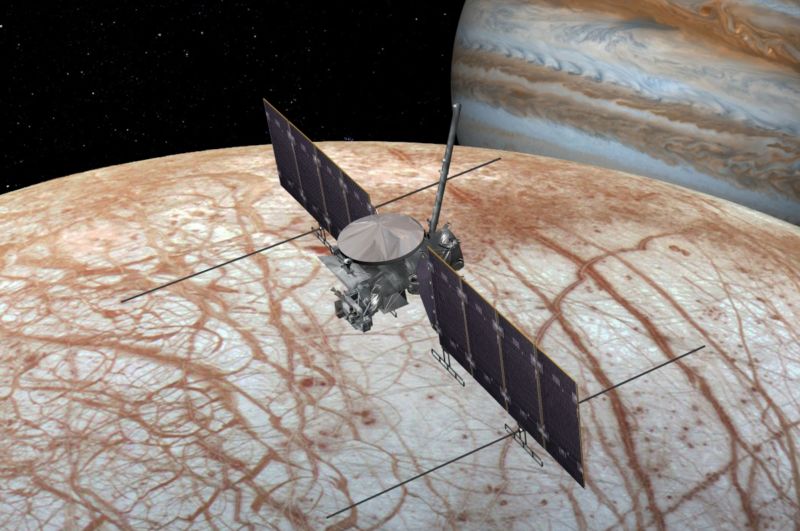Europa probably glows in the dark, and that may tell us what’s in it

Enlarge / An early design of the Europa Clipper spacecraft. (credit: NASA)
If everything goes according to plan, 2024 will see NASA launch the Europa Clipper program, which is designed to make multiple passes to study the water-rich moon's potential to host life. The big challenge the mission will face is that any liquid water is likely to be far below Europa's icy surface. At best, we can hope for some indication of what's going on based on the composition of any material trapped in the ice itself or the possible presence of geysers that release bits of its interior to space.
That makes understanding the sorts of remote sensing that might be possible critical. And, to that end, some NASA scientists have looked into how ice behaves in Jupiter's high-radiation environment. The scientists found out that Europa's ice probably glows in the dark, and that glow may carry some information about what's present in the ice.
Let there be lightThe mechanism that can make Europa's ice glow is a bit like what's used by a black light poster. There, light outside of the visible wavelengths excites molecules that then release the energy at wavelengths we can see. In the case of Europa, the excitation energy doesn't come from light, but that energy is indirectly powered by Jupiter's magnetic fields. These fields pick up charged particles liberated by the planet itself (or one of its moons) and accelerate them. (Much of the material in Jupiter's high-radiation areas was expelled into space by volcanoes on its moon Io.)
Read 12 remaining paragraphs | Comments